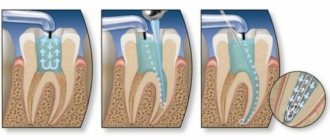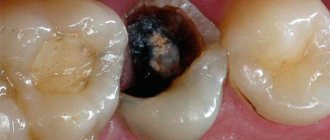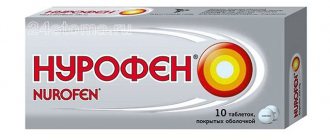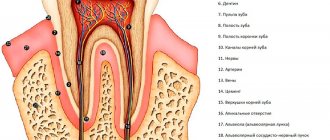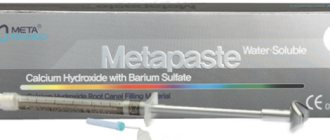If the resulting hole in the tooth is not filled in time, it may collapse and will have to be removed over time. You need to figure out why holes appear in teeth and how to deal with them.
The most basic reason for the appearance of a hole is tooth disease with caries, which first appears as a small dark spot on the tooth enamel. If caries is not treated at the initial stage of its appearance, it can gradually grow, penetrate into the tooth pulp and form a carious cavity. This cavity must be filled so as not to lose the entire tooth. A filling is placed if the tooth is affected by simple caries or complicated caries, or if pulpitis or pericementitis occurs.
When is a temporary filling required?
A temporary filling is much inferior to a permanent one in terms of strength and durability. It is only needed for a couple of days to keep food and other substances out of the tooth cavity between visits to the dentist. Such a filling can be installed in the following cases:
- — If the root canal treatment was lengthy and the installation of a permanent filling is postponed to the next visit.
- — A temporary filling can serve to hold medication placed in the tooth cavity.
- — If the doctor is not sure that the nerve remains intact. Waiting some time will help you understand whether the tooth can be covered with permanent material.
Expiration date, tips
In order for the filling to last for a long time, the following rules must be observed:
- If possible, exclude sweets from your diet.
- Eat food at room temperature. Excessively hot or cold foods contribute to the appearance of microcracks.
- Use a medium-hard toothbrush.
- Carry out oral hygiene procedures after every meal (even snacks).
- Use calcium and fluoride supplements to support dental health.
To clean the tooth surface, in addition to paste, it is recommended to use flosses, rinses, and irrigators with disinfecting components.
Manufacturers of preparations for home filling of dental cavities talk about the durability of the installed filling, however, in any case, you should consult a dentist for advice. This will help avoid a number of negative consequences after home filling.
Types of temporary fillings
There are several options for temporary fillings:
- — Water-based artificial dentin. It is a mixture of distilled water and powder (zinc sulfate, zinc oxide, kaolin). The doctor brings the filling material to the desired consistency by adding water.
- — Oil-based dentin. The composition of such artificial dentin is the same, but not with water, but with clove or peach oil. The material does not need to be mixed; it is sold ready-made.
- — Special cement. There are several material options. It is used for teeth exposed to chewing stress. The product also serves as a gasket when filling canals.
- Polymers. The rubber-like paste, which hardens when exposed to light, is a durable material that adheres well to the surface of the tooth.
Temporary prosthetics of the front tooth
Since at the moment the patient cannot begin implantation and dental prosthetics with ceramic crowns, and the absence of a front tooth greatly affects the aesthetics, it was decided to perform a temporary prosthesis for the front tooth. An adhesive cuspid bridge was chosen as a temporary prosthesis.
To make a temporary dental prosthesis, impressions of the teeth must be taken. Taking impressions of teeth in the traditional way, using impression material, is not suitable for all patients: some patients experience a gag reflex when taking impressions, and it becomes impossible to remove the impression, and some patients with loose teeth experience nervousness, fearing that they will lose a tooth when taking an impression.
Family Dentistry offers an alternative to traditional impressions - dental scanning. Using dental scanning, the doctor receives three-dimensional digital models of the jaws, from which he can model crowns, inlays and dentures. The doctor transfers the digital models and simulation results to the dental technician, who makes the dental restorations.
The front tooth prosthesis is made of aesthetic plastic. Such a tooth will be attached to the neighboring ones with special linings on the inside, that is, the neighboring teeth are not ground down.
This option is temporary, but it restored the aesthetics well. Later, when the patient is ready, the front tooth will be restored with a ceramic crown on an implant, and the neighboring ones will be restored with ceramic crowns - then the aesthetics will be ideal.
Is it possible to install a temporary filling yourself?
The installation of fillings should only be entrusted to a doctor. The fact is that, for all its rigidity, the tooth is very easily susceptible to infection. If you close a cavity in a tooth without proper preparation, there is a high probability of infection and the development of serious complications. The simplest thing is inflammation of the pulp, or pulpitis. In serious cases, the patient may lose a tooth and even harm neighboring ones if the inflammation spreads.
The desire to fill a tooth with temporary material may arise if a permanent or temporary filling falls out or a piece of the crown part of the tooth breaks off. In these cases, you need to make an appointment with a doctor as soon as possible, and while waiting for the visit, avoid getting food into the resulting cavity and follow simple rules.
Filling teeth at home: benefits
In the absence of pain and carious lesions, you can fill a tooth at home without going to the doctor. Self-installation of a filling helps:
- Reduce waste of time and money. A “homemade” filling is much cheaper than one placed by a doctor in a clinic. The procedure takes no more than an hour and does not require changing your usual schedule.
- Save the damaged tooth. There are dentists who still prefer radical methods to modern treatment. By filling the hole yourself, you can avoid removal and subsequent costs for prosthetics.
- Prevent infection. Regardless of the level of the clinic, there is no complete confidence in the quality and compliance with instrument processing techniques. The devices used at home are absolutely sterile.
- Avoid stress. The need to visit a dentist simply frightens most adults. The home filling method helps eliminate the problem without discomfort.
Online consultation with a doctor about possible complications of self-medication
If your permanent or temporary filling has fallen out, or a piece of a tooth has broken off, you should not waste time or try to cover the defect yourself with something. It is best to undergo an examination and consultation with a dentist. Because no available means can replace a dental filling or perform proper sanitation. A professional assessment of the condition of the tooth is necessary. Otherwise, complications may occur, infection of the wounded area, and inflammation of the nerve. Which will lead to more complex and expensive treatment:
- treatment of pulpitis;
- restoration with inlay;
- removal of a tooth;
- dental implantation;
- prosthetics.
Dial-Dent specialists who took part in this treatment
- Orthopedic dentist S.V. Zukor – diagnostics, treatment planning, preparation of treatment estimates.
- Surgeon T.R. Zhazykoev – tooth extraction under sedation.
- Anesthesiologist V.S. Kulakov – conducting sedation, monitoring the patient’s condition.
- Dentist-endodontist Yu.A. Borisova – treatment of dental canals under a microscope.
- Dental hygienist E. Smirnova – professional oral hygiene, preparation for dental treatment, selection of hygiene products, training in brushing teeth.
- Dental technician D.V. Wolf – making a temporary denture.
- Dental assistants L. Kharlamova, A. Antoshkina.
See other examples of dental treatment and prosthetics here.
Make an appointment for a consultation by phone +7-499-110-18-04 or through the form on the website. You can ask questions about dental treatment and prosthetics to the chief doctor of the clinic, Sergei Vladimirovich Tsukor, at
What to do if there is a hole in your tooth?
Some manipulations will help you wait for a visit to the doctor without complications:
- First of all, it is important to prevent the accumulation of food debris and plaque inside the tooth. The danger is that bacteria developing in dental plaque release acids that are destructive to teeth.
- If your tooth hurts, you can take a painkiller.
- It would be a good idea to rinse with a warm soda solution.
- It is better to limit chewing on the painful side so as not to provoke an attack of pain.
- There is no need to cover the cavity with cotton wool, plasticine and other improvised means. This can cause complications and the development of infection.
Formation of a hole on the side
The process of formation of “side” holes in teeth is no different from the occurrence of carious cavities in other places of the tooth. The inconvenience lies in the very “lateral” location, it is simply difficult to get there and therefore such holes are discovered already at the final stage, the symptomatology of which is acute pain due to pulpitis. When treating such formations, the dentist uses a speculum and multiple instruments, and the patient must be prepared for the fact that the mouth will have to be kept wide open and for quite a long time.
Expert opinion
Lyubov Ivanovna Kopylova
dentist-therapist
Experience: more than 10 years
Temporary filling at home is an option for those who cannot get to the doctor for quality caries treatment. This is not an alternative method of dental treatment and is not an option for those who want to save money on visiting a doctor. Caries can be cured only in a dental clinic, using modern equipment for removing pathological tissue and high-quality filling material. It is important to understand that the temporary filling that you put on yourself does not stop the destructive process!
How to fill a tooth yourself using the Tsivinsky method
It is important to know exactly how and what a filling is made of. As a classic filling, drilling is used, after which a filling is installed. Dr. Tsivinsky has created a new technique that allows the procedure in question to be performed without the use of a drill. This method helps speed up the process of tooth restoration and also eliminates the pain of this event.
Stages of filling with Santedex:
- It is necessary to thoroughly mix the dry and liquid material in the package. The result should be a clay consistency.
- Next, fill the tooth hole with the resulting medicinal mixture.
This procedure is suitable for:
- filling microcracks in the tooth;
- eliminating pain;
- providing a therapeutic effect;
- relieving enamel hypersensitivity.
Filling with Santedex can save a person from the above dental problems overnight. Using this method, you can maintain dental health permanently. The author of the technique speaks about the durability of such fillings, and also emphasizes the need and effectiveness of using medicinal powder for damaged teeth. This is due to the relief of inflammatory processes and disinfection of areas of the oral cavity due to the valuable properties of the medicine.
Prevention of caries
The easiest way to avoid fillings or minimize the number of fillings is to visit your dentist regularly. This should be done at least once every six months. Simple tips will also help keep your teeth healthy:
- Careful hygiene. You need to brush your teeth with a high-quality brush and toothpaste at least twice a day.
- Using dental floss will help remove plaque from hard-to-reach places.
- Rinsing with special liquids will also help keep your gums healthy, which play a huge role in keeping your mouth healthy.
- A balanced diet will help ensure you have enough vitamins and minerals to keep your teeth strong.
Now we treat teeth even better!
Treatment, re-treatment of canals, elimination of caries under a microscope without damaging healthy tooth tissue.
We do everything to save your own tooth. Consultation with specialists is FREE!
More details
Diagnosis and treatment planning for periodontitis
The patient complained that his front teeth began to become loose and his upper tooth began to hurt. During the examination, the dentist found out that 8 teeth were missing, and there were many problems with the rest.
Problems during inspection:
- On the lower jaw, only the root remained of one tooth.
- On the upper jaw, the chewing tooth is severely destroyed.
- Some teeth have protruded towards the opposite jaw.
- The central lower tooth is very loose.
- There are a lot of deposits on the teeth (plaque, tartar).
- The gums near the upper tooth are very inflamed, the tooth hurts when pressed.
- Old fillings on teeth - unaesthetic fillings on the upper front teeth, a sagging filling on a chewing tooth.
To understand the condition of the bone, a computed tomography scan of the teeth was performed.
The main problems with the image:
- Critical loss of bone tissue in the area of the lateral teeth and the lower front tooth.
- Inflammation at the roots of the two front upper teeth on the right.
- Inflammation in the maxillary sinus (sinusitis).
A computed tomogram of the teeth shows that the central lower tooth (the tooth was loose) practically does not hold in the bone, the bone tissue around the root is sparse.
Diagnosis
– partial secondary adentia (loss of teeth), chronic generalized periodontitis, malocclusion, right-sided odontogenic sinusitis.
The reason for this condition was the lack of prevention (the patient had not visited a hygienist for several years) and regular dental examinations. Tooth loss can be prevented by taking good care of your health. Visit your dentist, even if you have no complaints, twice a year!
Comprehensive treatment plan:
- professional oral hygiene to remove all deposits and prepare for dental treatment,
- revision and removal of failing teeth,
- treatment of tooth canals (the roots of which have inflammation and treatment is advisable),
- treatment of sinusitis,
- installation of dental implants in the lower jaw with plastic surgery of bone and soft tissues,
- prosthetics of lower teeth on implants,
- prosthetics of the upper teeth with removable telescopic dentures,
- restoration of the remaining teeth with ceramic crowns.
The estimate for complete treatment was 1,804,974 rubles.
At the moment, this amount is unaffordable for the patient, since his wife is undergoing bite correction and dental prosthetics at Dial-Dent (in fact, looking at his wife, the man decided to visit the dentist). Due to the difficult financial situation, it was decided at this time to do everything necessary to eliminate the development of periodontitis and prevent the loss of remaining teeth.
Abbreviated treatment plan (elimination of emergency problems):
- Professional oral hygiene.
- Removal of 6 failing teeth under sedation.
- Treatment of sinusitis.
- Treatment of canals of two front teeth under a microscope.
- Temporary aesthetic prosthetics for the removed lower anterior tooth.
Such an abbreviated plan (with an estimate of 83,000 rubles) provides for the continuation of treatment at any time, the logic of the stages will not be disrupted, and the health of the dental system will be preserved as much as possible before moving on to further treatment. The main thing is not to delay the restoration of teeth too much, since without load (without installing implants) the jaw bone is prone to thinning, and chewing without teeth in the lateral sections is very uncomfortable, the joints are overloaded.
